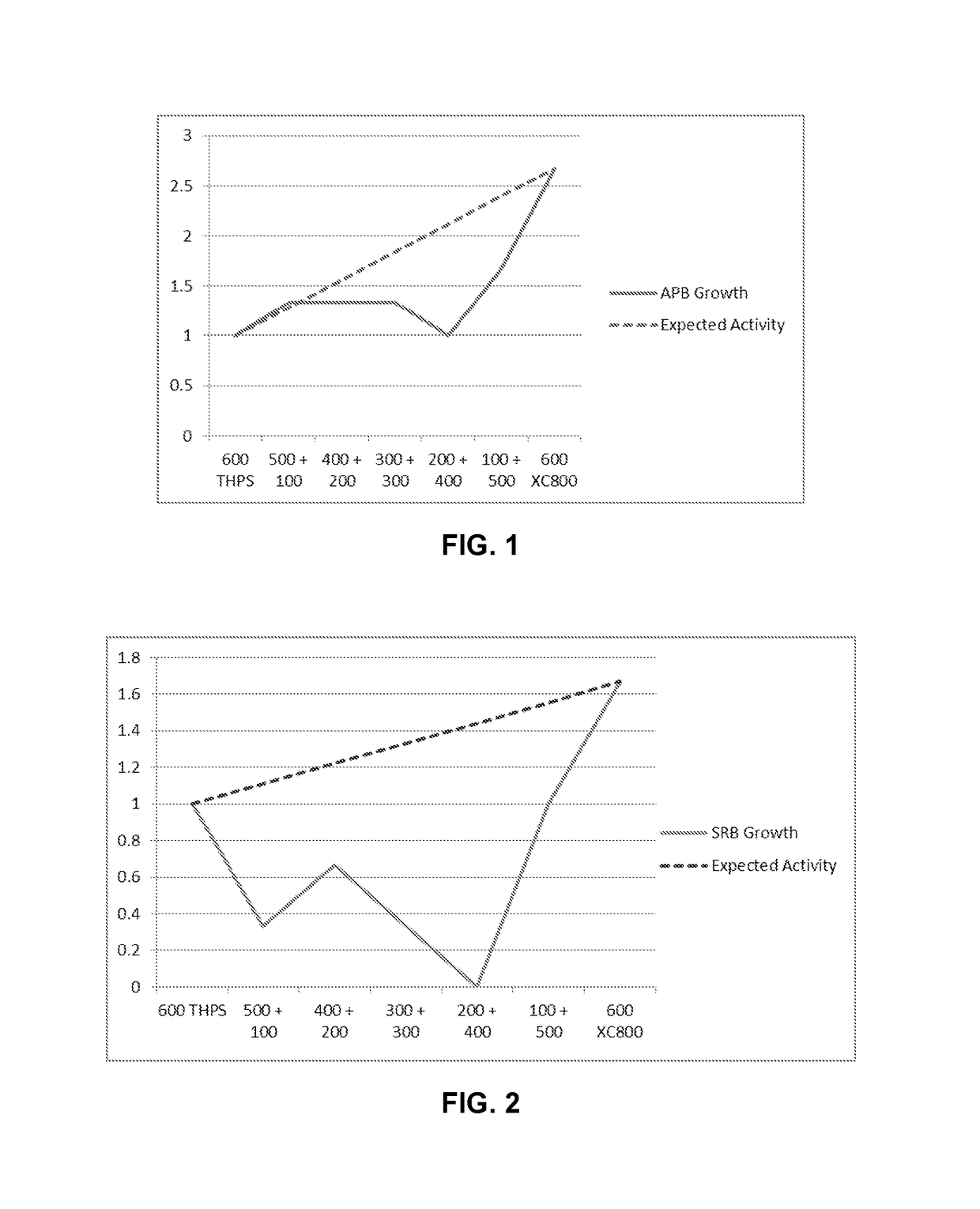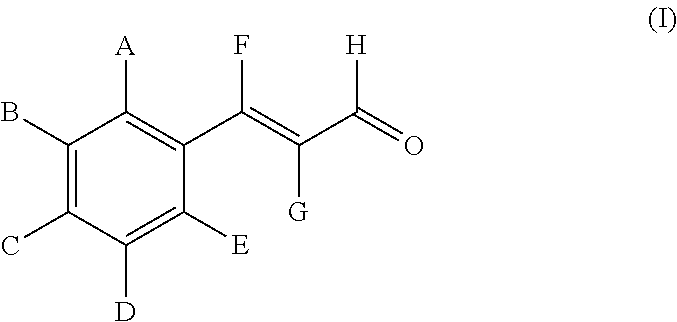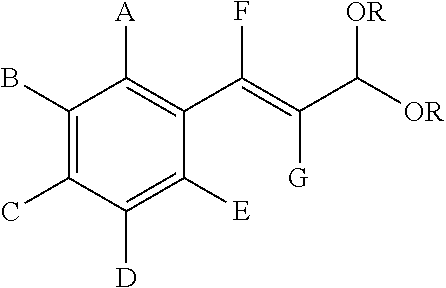Process for preventing or mitigating biofouling
a technology of biofouling and process, applied in the field of process, can solve the problems of biofouling being a substantial problem, affecting the economic benefits of the process, and becoming subject to heavy biofouling, so as to prevent or mitigate the occurrence of biofouling, and reduce the growth of bacteria
- Summary
- Abstract
- Description
- Claims
- Application Information
AI Technical Summary
Benefits of technology
Problems solved by technology
Method used
Image
Examples
example 1
[0055]Water samples containing biofouling bacteria, in this particular case, sulfate-reducing bacteria (SRB), were used to test for synergism of cinnamaldehyde with tetrakis hydroxymethyl phosphonium sulfate (THPS). The samples were treated with different concentrations of THPS in combination with different concentrations of cinnamaldehyde and incubated for 3 hours. Following the treatment, an aliquot of each sample was serially diluted (10-fold dilutions) into culture media for SRB to enumerate the survivors according to NACE TMO 194-2004. The results are presented in Table 1 below:
[0056]
TABLE 1THPSCinnamaldehydeSRB SurvivingConcentrationConcentrationTreatment(ppm)(ppm)(SRB / ml)00≥1010500≥10101000≥10102500 105025≥10105025≥101010025≥101025025 104050≥10105050≥101010050 10525050 102
[0057]This test clearly shows that even at very low concentrations, cinnamaldehyde improves the ability of THPS to inhibit the growth of sulfate reducing bacteria.
example 2
[0058]A sample of a bacterial-fouled water was taken from an oil production site and used as a culture base for testing of cinnamaldehyde as a bactericide. The culture was introduced into a synthetic brine (similar to that used for oilfield operations) and turbidity was measure at 600 nm after 24 hours. The results are shown below in Table 2:
[0059]
TABLE 2CinnamaldehydeConcentration (ppm)Turbidity02.098501.8541250.9732500.1753750.1035000.113
example 3
[0060]Various biocidal blends with only 50% THPS, only XC800, and different mixtures were tested, along with a control, at preventing or mitigating APB growth. The media was seawater with 3% total dissolved solids (TDS). Contact times were 20 hours and the reaction volume was 50 ml, using 8 bottles per dilution series string. APB growth was measured from 0 to 4 in logarithmic units. XC800 is a cinnamaldehyde additive, specifically cinnamaldehyde, a surfactant, and a glycol ether as a solvent.
[0061]The results are presented in Table 3 and graphed in FIG. 1. In FIG. 1, it is expected that the mitigation of APB growth would generally follow a straight line (dashed in FIG. 1) from 600 ppm THPS (50%) to 600 ppm XC800. Surprisingly and unexpectedly, it was discovered that when THPS and XC800 were used together, particularly in ratios of 400 ppm / 200 ppm to 100 ppm / 500 ppm, APB growth was well below the expected activity curve.
[0062]
TABLE 3Mitigation of APB with THPS and CinnamaldehydeSampl...
PUM
| Property | Measurement | Unit |
|---|---|---|
| volume | aaaaa | aaaaa |
| volume ratio | aaaaa | aaaaa |
| weight ratio | aaaaa | aaaaa |
Abstract
Description
Claims
Application Information
 Login to View More
Login to View More - R&D
- Intellectual Property
- Life Sciences
- Materials
- Tech Scout
- Unparalleled Data Quality
- Higher Quality Content
- 60% Fewer Hallucinations
Browse by: Latest US Patents, China's latest patents, Technical Efficacy Thesaurus, Application Domain, Technology Topic, Popular Technical Reports.
© 2025 PatSnap. All rights reserved.Legal|Privacy policy|Modern Slavery Act Transparency Statement|Sitemap|About US| Contact US: help@patsnap.com



